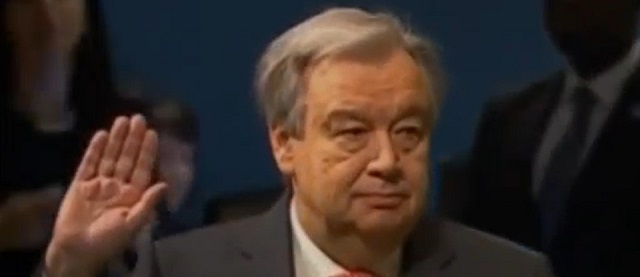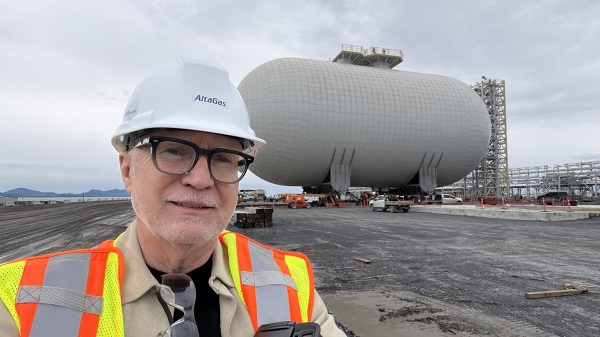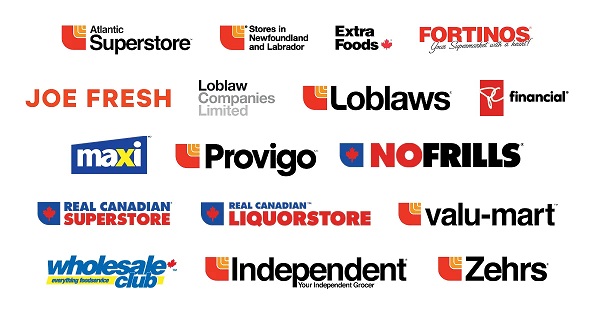Energy
UN Secretary-General Ramps Up Tiresome Climate-Fright Rhetoric One More Time

 From the Daily Caller News Foundation
From the Daily Caller News Foundation
In his unending quest to constantly heat up fright rhetoric about climate change, United Nations Secretary-General Antonio Guterres last week referred to oil companies as “the godfathers of climate chaos” and urged national governments to place bans on their ability to advertise their products.
Speaking at an event called World Climate Day, Guterres told attendees that “we are playing Russian roulette with our planet,” adding, “we need an exit ramp off this highway to hell.”
The latter bit of hyperbolic nonsense was a reference to a bit of fright rhetoric he unveiled during the COP27 conference held in Egypt in November 2022. In that speech, Guterres warned: “We are on a highway to climate hell with our foot on the accelerator.”
He also warned, outrageously, that: “We can sign a climate solidarity pact, or a collective suicide pact.”
The global media establishment threw a collective hissy fit in March when former President Donald Trump used the term “bloodbath” to describe the damage that Biden administration policies are doing to the U.S. auto industry. Imagine the pearl clutching that would take place at the same media outlets if the GOP presidential candidate used the term “collective suicide pact” to describe his opponent’s climate policies.
Talking heads at CNN and MSNBC might faint dead away on air.
But because Guterres is a key pusher of the preferred climate narrative, his bombastic rhetoric is fine. In his most recent salvo, the secretary general failed to include reference to his July 2023 claim that the hot weather last summer (who knew it is hot in New York in July?) meant that “the era of global warming has ended” and “the era of global boiling has arrived.” We should all be grateful for that omission.
Guterres’ latest bit of panic speech comes as world events indicate that the climate change narrative is failing. The just-completed elections for the European Union Parliament resulted in a rejection of Europe’s ruling class that was significant enough to convince Belgian Prime Minister Alexander de Croo to resign and French President Emmanuel Macron to dissolve France’s parliament and call for snap elections.
In the United States, poll after poll shows low support for the Biden energy and climate agenda, and Energy Secretary Jennifer Granholm is suddenly showing strong support for nuclear energy. Meanwhile, Biden’s vaunted offshore wind initiatives are faltering badly, and the U.S. electric-vehicle industry is also struggling.
In an op-ed in the Wall Street Journal entitled “The Climate Crisis Fades Out,” former Obama climate advisor and author Steven Koonin says one reason why the climate alarm rhetoric is failing to move voters lies in the reality that “the energy transition’s purported climate benefits are distant, vague and uncertain while the costs and disruption of rapid decarbonization are immediate and substantial. The world has many more urgent needs, including the provision of reliable and affordable energy to all.”
Noting that the preferred, rent-seeking “solutions” to climate change offered by the ruling class are not really solutions at all — a theme I’ve written about for several years now — Koonin posits that we should be happy that the “crisis” narrative is failing and fading as it goes through what he refers to as the “issues-attention cycle.”
As a result of this focus on these non-solutions, global emissions have continued to rise in this century. Fossil fuels still provide roughly 80% of primary energy now despite more than $12 trillion in renewable energy investments in just the past 9 years. Koonin points out that the “latest United Nations emissions report projects that emissions in 2030 will be almost twice as high as a level compatible with the [2015 Paris Agreement] aspiration.”
Koonin believes the public’s fading attention to the issue of climate alarmism “means that today’s ineffective, inefficient, and ill-considered climate-mitigation strategies will be abandoned, making room for a more thoughtful and informed approach to responsibly providing for the world’s energy needs.”
But seeking more thoughtful and informed approaches does not appear to be a high priority at the UN these days, so we can all sit back and wait to see how Guterres will attempt to ramp up his tiresome, counterproductive hyperbole next. Expecting anything more is a fool’s errand.
David Blackmon is an energy writer and consultant based in Texas. He spent 40 years in the oil and gas business, where he specialized in public policy and communications.
Automotive
Politicians should be honest about environmental pros and cons of electric vehicles

From the Fraser Institute
By Annika Segelhorst and Elmira Aliakbari
According to Steven Guilbeault, former environment minister under Justin Trudeau and former member of Prime Minister Carney’s cabinet, “Switching to an electric vehicle is one of the most impactful things Canadians can do to help fight climate change.”
And the Carney government has only paused Trudeau’s electric vehicle (EV) sales mandate to conduct a “review” of the policy, despite industry pressure to scrap the policy altogether.
So clearly, according to policymakers in Ottawa, EVs are essentially “zero emission” and thus good for environment.
But is that true?
Clearly, EVs have some environmental advantages over traditional gasoline-powered vehicles. Unlike cars with engines that directly burn fossil fuels, EVs do not produce tailpipe emissions of pollutants such as nitrogen dioxide and carbon monoxide, and do not release greenhouse gases (GHGs) such as carbon dioxide. These benefits are real. But when you consider the entire lifecycle of an EV, the picture becomes much more complicated.
Unlike traditional gasoline-powered vehicles, battery-powered EVs and plug-in hybrids generate most of their GHG emissions before the vehicles roll off the assembly line. Compared with conventional gas-powered cars, EVs typically require more fossil fuel energy to manufacture, largely because to produce EVs batteries, producers require a variety of mined materials including cobalt, graphite, lithium, manganese and nickel, which all take lots of energy to extract and process. Once these raw materials are mined, processed and transported across often vast distances to manufacturing sites, they must be assembled into battery packs. Consequently, the manufacturing process of an EV—from the initial mining of materials to final assembly—produces twice the quantity of GHGs (on average) as the manufacturing process for a comparable gas-powered car.
Once an EV is on the road, its carbon footprint depends on how the electricity used to charge its battery is generated. According to a report from the Canada Energy Regulator (the federal agency responsible for overseeing oil, gas and electric utilities), in British Columbia, Manitoba, Quebec and Ontario, electricity is largely produced from low- or even zero-carbon sources such as hydro, so EVs in these provinces have a low level of “indirect” emissions.
However, in other provinces—particularly Alberta, Saskatchewan and Nova Scotia—electricity generation is more heavily reliant on fossil fuels such as coal and natural gas, so EVs produce much higher indirect emissions. And according to research from the University of Toronto, in coal-dependent U.S. states such as West Virginia, an EV can emit about 6 per cent more GHG emissions over its entire lifetime—from initial mining, manufacturing and charging to eventual disposal—than a gas-powered vehicle of the same size. This means that in regions with especially coal-dependent energy grids, EVs could impose more climate costs than benefits. Put simply, for an EV to help meaningfully reduce emissions while on the road, its electricity must come from low-carbon electricity sources—something that does not happen in certain areas of Canada and the United States.
Finally, even after an EV is off the road, it continues to produce emissions, mainly because of the battery. EV batteries contain components that are energy-intensive to extract but also notoriously challenging to recycle. While EV battery recycling technologies are still emerging, approximately 5 per cent of lithium-ion batteries, which are commonly used in EVs, are actually recycled worldwide. This means that most new EVs feature batteries with no recycled components—further weakening the environmental benefit of EVs.
So what’s the final analysis? The technology continues to evolve and therefore the calculations will continue to change. But right now, while electric vehicles clearly help reduce tailpipe emissions, they’re not necessarily “zero emission” vehicles. And after you consider the full lifecycle—manufacturing, charging, scrapping—a more accurate picture of their environmental impact comes into view.
Energy
Canada’s future prosperity runs through the northwest coast

From Resource Works
A strategic gateway to the world
Tucked into the north coast of B.C. is the deepest natural harbour in North America and the port with the shortest travel times to Asia.
With growing capacity for exports including agricultural products, lumber, plastic pellets, propane and butane, it’s no wonder the Port of Prince Rupert often comes up as a potential new global gateway for oil from Alberta, said CEO Shaun Stevenson.
Thanks to its location and natural advantages, the port can efficiently move a wide range of commodities, he said.
That could include oil, if not for the federal tanker ban in northern B.C.’s coastal waters.

“Notwithstanding the moratorium that was put in place, when you look at the attributes of the Port of Prince Rupert, there’s arguably no safer place in Canada to do it,” Stevenson said.
“I think that speaks to the need to build trust and confidence that it can be done safely, with protection of environmental risks. You can’t talk about the economic opportunity before you address safety and environmental protection.”
Safe transit at Prince Rupert
About a 16-hour drive from Vancouver, the Port of Prince Rupert’s terminals are one to two sailing days closer to Asia than other West Coast ports.
The entrance to the inner harbour is wider than the length of three Canadian football fields.
The water is 35 metres deep — about the height of a 10-storey building — compared to 22 metres at Los Angeles and 16 metres at Seattle.
Shipmasters spend two hours navigating into the port with local pilot guides, compared to four hours at Vancouver and eight at Seattle.
“We’ve got wide open, very simple shipping lanes. It’s not moving through complex navigational channels into the site,” Stevenson said.
A port on the rise
The Prince Rupert Port Authority says it has entered a new era of expansion, strengthening Canada’s economic security.
The port estimates it anchors about $60 billion of Canada’s annual global trade today. Even without adding oil exports, Stevenson said that figure could grow to $100 billion.
“We need better access to the huge and growing Asian market,” said Heather Exner-Pirot, director of energy, natural resources and environment at the Macdonald-Laurier Institute.
“Prince Rupert seems purpose-built for that.”
Roughly $3 billion in new infrastructure is already taking shape, including the $750 million rail-to-container CANXPORT transloading complex for bulk commodities like specialty agricultural products, lumber and plastic pellets.

Canadian propane goes global
A centrepiece of new development is the $1.35-billion Ridley Energy Export Facility — the port’s third propane terminal since 2019.
“Prince Rupert is already emerging as a globally significant gateway for propane exports to Asia,” Exner-Pirot said.
Thanks to shipments from Prince Rupert, Canadian propane – primarily from Alberta – has gone global, no longer confined to U.S. markets.
More than 45 per cent of Canada’s propane exports now reach destinations outside the United States, according to the Canada Energy Regulator.
“Twenty-five per cent of Japan’s propane imports come through Prince Rupert, and just shy of 15 per cent of Korea’s imports. It’s created a lift on every barrel produced in Western Canada,” Stevenson said.
“When we look at natural gas liquids, propane and butane, we think there’s an opportunity for Canada via Prince Rupert becoming the trading benchmark for the Asia-Pacific region.”
That would give Canadian production an enduring competitive advantage when serving key markets in Asia, he said.
Deep connection to Alberta
The Port of Prince Rupert has been a key export hub for Alberta commodities for more than four decades.
Through the Alberta Heritage Savings Trust Fund, the province invested $134 million — roughly half the total cost — to build the Prince Rupert Grain Terminal, which opened in 1985.
The largest grain terminal on the West Coast, it primarily handles wheat, barley, and canola from the prairies.

Today, the connection to Alberta remains strong.
In 2022, $3.8 billion worth of Alberta exports — mainly propane, agricultural products and wood pulp — were shipped through the Port of Prince Rupert, according to the province’s Ministry of Transportation and Economic Corridors.
In 2024, Alberta awarded a $250,000 grant to the Prince Rupert Port Authority to lead discussions on expanding transportation links with the province’s Industrial Heartland region near Edmonton.
Handling some of the world’s biggest vessels
The Port of Prince Rupert could safely handle oil tankers, including Very Large Crude Carriers (VLCCs), Stevenson said.
“We would have the capacity both in water depth and access and egress to the port that could handle Aframax, Suezmax and even VLCCs,” he said.
“We don’t have terminal capacity to handle oil at this point, but there’s certainly terminal capacities within the port complex that could be either expanded or diversified in their capability.”
Market access lessons from TMX
Like propane, Canada’s oil exports have gained traction in Asia, thanks to the expanded Trans Mountain pipeline and the Westridge Marine Terminal near Vancouver — about 1,600 kilometres south of Prince Rupert, where there is no oil tanker ban.
The Trans Mountain expansion project included the largest expansion of ocean oil spill response in Canadian history, doubling capacity of the West Coast Marine Response Corporation.

The Canada Energy Regulator (CER) reports that Canadian oil exports to Asia more than tripled after the expanded pipeline and terminal went into service in May 2024.
As a result, the price for Canadian oil has gone up.
The gap between Western Canadian Select (WCS) and West Texas Intermediate (WTI) has narrowed to about $12 per barrel this year, compared to $19 per barrel in 2023, according to GLJ Petroleum Consultants.
Each additional dollar earned per barrel adds about $280 million in annual government royalties and tax revenues, according to economist Peter Tertzakian.
The road ahead
There are likely several potential sites for a new West Coast oil terminal, Stevenson said.
“A pipeline is going to find its way to tidewater based upon the safest and most efficient route,” he said.
“The terminal part is relatively straightforward, whether it’s in Prince Rupert or somewhere else.”
Under Canada’s Marine Act, the Port of Prince Rupert’s mandate is to enable trade, Stevenson said.
“If Canada’s trade objectives include moving oil off the West Coast, we’re here to enable it, presuming that the project has a mandate,” he said.
“If we see the basis of a project like this, we would ensure that it’s done to the best possible standard.”
This article originally appeared in Canadian Energy Centre
Resource Works News
-

 Alberta9 hours ago
Alberta9 hours agoThe Recall Trap: 21 Alberta MLA’s face recall petitions
-

 Digital ID2 days ago
Digital ID2 days agoCanada considers creating national ID system using digital passports for domestic use
-

 Fraser Institute2 days ago
Fraser Institute2 days agoClaims about ‘unmarked graves’ don’t withstand scrutiny
-

 Business2 days ago
Business2 days agoToo nice to fight, Canada’s vulnerability in the age of authoritarian coercion
-

 Alberta2 days ago
Alberta2 days agoHere’s why city hall should save ‘blanket rezoning’ in Calgary
-

 illegal immigration10 hours ago
illegal immigration10 hours agoUS Notes 2.5 million illegals out and counting
-

 Energy2 days ago
Energy2 days agoMeet REEF — the massive new export engine Canadians have never heard of
-

 International9 hours ago
International9 hours agoTyler Robinson shows no remorse in first court appearance for Kirk assassination











